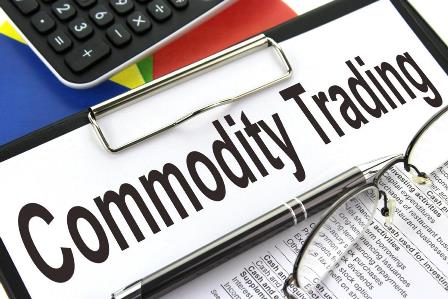A futures spread refers to an arbitrage technique wherein a trader assumes two positions simultaneously on a commodity to gain from a price differential. In futures spread trading, a unit trade is completed with both a long and short position, also known as the two legs of a spread. Essentially, a trader takes positions that offset each other in commodity futures trading. The two positions have different expiries so that the trader can take advantage of the price change.
There are two types of contracts based on two futures spread trading strategies in commodities – inter-commodity spread and intra-commodity spread.
1. Inter-commodity futures spread: These are futures spreads between two related but different commodities within the same contract month. An example of an inter-commodity futures spread is when one is more bullish on rice than on the wheat market and buys rice futures and, at the same time, sells wheat futures. In this scenario, he/she would profit if the price of rice rises more than the price of wheat.
2. Intra-commodity calendar spread: An intra-commodity futures refers to a spread in the same commodity; however, the offsetting positions are taken for different months. For instance, a trader buys a November rice futures contract and sells a January rice futures contract.
Also simply known as calendar spreads, these are often used for hedging by rolling a futures position from one month to the next month. Usually, with these spreads, the trader will lose in one position or leg but a profit with the other.
Margins from Spreads in Future Commodity Market
Owing to higher volatility, margins for futures spreads are lower compared to that when one is trading with a single contract. This is because, in an adverse event, both contracts are affected in futures spread trading compared to one contract in regular commodity futures trading. Thus, a loss on one position will offset the profit on another and result in lower margins. However, this is one of the trading strategies that can provide an effective hedge against systemic risk. Future spreads can be a profitable futures strategy when the trader sees the potential to benefit from price volatility.
Commodity Spread Options
A commodity spread option is a commodity option that derives its value from the spread between the prices of two or more commodities. Commodity spread options are similar to a vanilla option, except for the unique underlying.
A spread option is different from an options spread in that the latter is a trading strategy, which includes trading with two or more options on the same, single underlying asset. Spread options are primarily traded over-the-counter (OTC).
Commodity-Product Spreads
Some types of commodity option spreads even allow the trader to get exposure to the commodity’s processing of raw materials. This strategy aims to capitalize on the difference between the raw materials, intermediate product, and final outputs. For example, spreads between crack, crush, and spark gauge profits, respectively, in oil, soybean, and electricity markets.
When it comes to futures spread trading strategies and commodity options, it must be borne in mind that many commodities markets are seasonal, with periods of high supply and demand. Traders may consider using spreads to take advantage of these seasonal supply and demand fluctuations.









